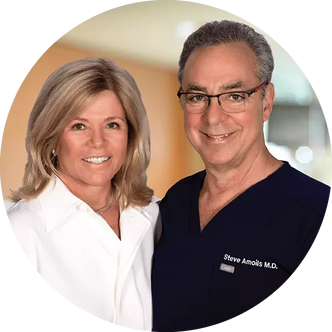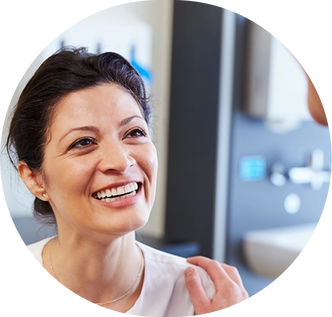Antibiotics can be a vital tool for tackling infections, but they often come with a downside—disrupting the balance of beneficial bacteria in your gut. This disbalance can lead to digestive discomfort, fatigue, and even a weakened immune system.
To reclaim your health after a course of antibiotics, it’s crucial to nurture your digestive system back to balance.
At AIM For Wellbeing, we specialize in functional medicine strategies to support individuals on their gut-healing journeys. Here’s a simple, step-by-step guide to restoring your microbiome and improving your overall health.
How Antibiotics Disrupt Your Microbiome
Antibiotics are designed to destroy harmful bacteria, but they don’t discriminate between the bad and the good. When beneficial bacteria are wiped out, the balance in your gut microbiome suffers. You may notice symptoms like:
-
Digestive issues such as diarrhea or constipation
-
Mood changes due to gut-brain communication disruptions
-
Food sensitivities from impaired gut barrier function
These changes underscore the importance of proactive recovery.
Why Gut Recovery Matters for Whole-Body Health
Your gut is central to more than just digestion—it’s deeply entwined with overall well-being. A healthy microbiome supports strong immunity, hormone regulation, and mental clarity, making recovery a priority after antibiotics.
The gut-brain axis plays a key role here. This connection affects mood, energy levels, and how your body responds to stress. Gut bacteria even produce neurotransmitters like serotonin, further linking digestive health to emotional balance.
Step 1: Reintroduce Beneficial Bacteria
Choose the Right Probiotics
Probiotics help replenish beneficial microorganisms in your digestive tract. After antibiotics, it’s not just about quantity but quality and diversity of strains.
Different probiotic strains offer unique benefits, such as reducing bloating, improving nutrient absorption, and supporting immunity. Look for a multi-strain supplement tailored to gut restoration.
Fermented Foods to Support Recovery
Adding natural sources of probiotics to your diet can accelerate recovery. Try:
-
Kefir
-
Sauerkraut
-
Kimchi
-
Miso
-
Yogurt
Start small, especially if your digestion is sensitive, to avoid discomfort. AIM For Wellbeing offers tailored protocols to help incorporate these foods effectively.
Step 2: Nourish Your Microbiome with Prebiotics
What Prebiotics Do for Gut Repair
Prebiotics are the "food" for probiotics, helping friendly bacteria thrive. Integrating prebiotic fiber into your diet is essential during recovery. Include:
-
Onions
-
Garlic
-
Asparagus
-
Green bananas
These foods create an environment where probiotics can flourish.
Combining Prebiotics and Probiotics for Synbiotic Power
When prebiotics and probiotics work together, the synergy can supercharge your recovery. This combination, known as synbiotics, accelerates gut restoration and may shorten the time needed to feel better.
Step 3: Repair the Gut Lining
Key Nutrients for Gut Wall Integrity
A damaged gut lining can lead to symptoms like food sensitivities and inflammation. Support repair with:
-
L-glutamine to fuel intestinal cells
-
Zinc carnosine for healing
-
Omega-3 fatty acids to reduce inflammation
Natural options such as bone broth and collagen are also excellent for promoting gastrointestinal health.
Anti-Inflammatory Foods to Reduce Damage
Focus on foods that calm inflammation and repair damage, such as:
-
Leafy greens, bell peppers, and other colorful vegetables
-
Turmeric and ginger
-
Healthy fats like olive oil and avocado
Avoid highly-processed foods, as they can hinder the healing process.
Step 4: Support Digestive Enzymes and Stomach Acid
Why Digestion Suffers After Antibiotics
Antibiotics can lower stomach acid and alter enzyme activity, making digestion less effective. This often leads to poor nutrient absorption and discomfort.
Natural Ways to Boost Digestion
To restore digestive efficiency:
-
Consider digestive enzyme supplements
-
Eat mindfully by chewing thoroughly
-
Incorporate natural bitters like dandelion or arugula
These practices support a smoother recovery process.
Step 5: Restore Balance Through Lifestyle
Sleep and Stress Connection to Gut Health
Stress and poor sleep can significantly harm your gut. Elevated cortisol levels disrupt the microbiome, while quality sleep fosters recovery. Prioritize:
-
Deep, restorative sleep
-
Stress-management practices like meditation
Gentle Movement for Gut Motility
Physical activity encourages healthy digestion and motility. Activities like walking, yoga, and breathwork can be especially helpful. AIM For Wellbeing integrates these lifestyle adjustments as part of our holistic gut-healing programs.
Step 6: Monitor and Adjust Your Plan
Track Symptoms and Progress
Keep a journal to document:
-
Bowel movements
-
Energy levels
-
Mood changes
This practice helps identify what’s working and where adjustments are needed.
When to Seek Professional Guidance
If symptoms persist or worsen, it may indicate deeper issues like Small Intestinal Bacterial Overgrowth (SIBO), food sensitivities, or dysbiosis. Functional medicine testing can uncover these hidden challenges and guide effective interventions.
Nourish Your Gut, Nourish Your Life: AIM For Wellbeing’s Comprehensive Care

At AIM For Wellbeing, we go beyond generic advice to offer personalized solutions. Using advanced gut testing, we create recovery plans tailored to your unique needs. From pinpointing bacterial imbalances to identifying nutrient gaps, our team crafts a plan designed specifically for you—targeting root causes rather than masking symptoms.
We make your recovery easier with access to high-quality supplements, tailored meal plans, and one-on-one coaching to keep you on track. Every step is guided by science, personalization, and care.
Your gut health affects your immunity, mood, and energy—so don’t leave it to chance. Schedule a call with us today and take the first step toward restoring your gut and reclaiming your vitality.
Conclusion: Your Gut’s Comeback Starts Now
Restoring gut health after antibiotics takes time and commitment, but with the right strategy, full recovery is within reach. By incorporating targeted foods, supplements, and lifestyle changes, you can rebuild your microbiome and regain your vitality.
Contact us today to develop your personalized gut restoration plan. Your health is an investment—start restoring your digestive vitality now!




